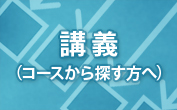

"What limits the number of observations that can be effectively assimilated?"
[ 2017年02月28日 ]
RIKEN International Symposium on Data Assimilation 2017
"What limits the number of observations that can be effectively assimilated?"
To exploit the emerging meteorological Big Data, DA systems (DASs) need to be able to fully extract information from dense and massive observations. One quantitative measure of the amount of information that a DAS extracts from observations is Degrees of Freedom for Signal (DFS).
Recent DFS diagnostics applied to JMA's quasi-operational global EnKF revealed that, when assimilating dense observations from hyperspectral sounders, EnKF extracts only ~1% of information from observations, with the rest coming from the background. In fact, a simple algebraic consideration shows that, in EnKF local analysis, DFS can never exceed the degrees of freedom for the background (i.e., the ensemble size). Since DFS, defined as the trace of can be interpreted as posterior spread measured in observation space, underestimated DFS implies overconfidence in the analysis; moreover, in several DA schemes where the Kalman gain is approximated from analysis perturbations, it also implies smaller-than-optimal analysis increment. It is thus important to understand precisely what limits the DFS for a given DAS.
In this talk we will discuss mathematical aspects of this issue using an idealized background covariance model, with particular emphasis on comparison between ensemble and variational schemes.
http://www.data-assimilation.riken.jp/risda2017/
※Flash動画に関しては、PC端末より閲覧頂くようお願い致します。
| 講師プロフィール |
 |
| 名前:Daisuke Hotta | 所属:Japan Meterological Agency |
| 略歴:外部ページ |





